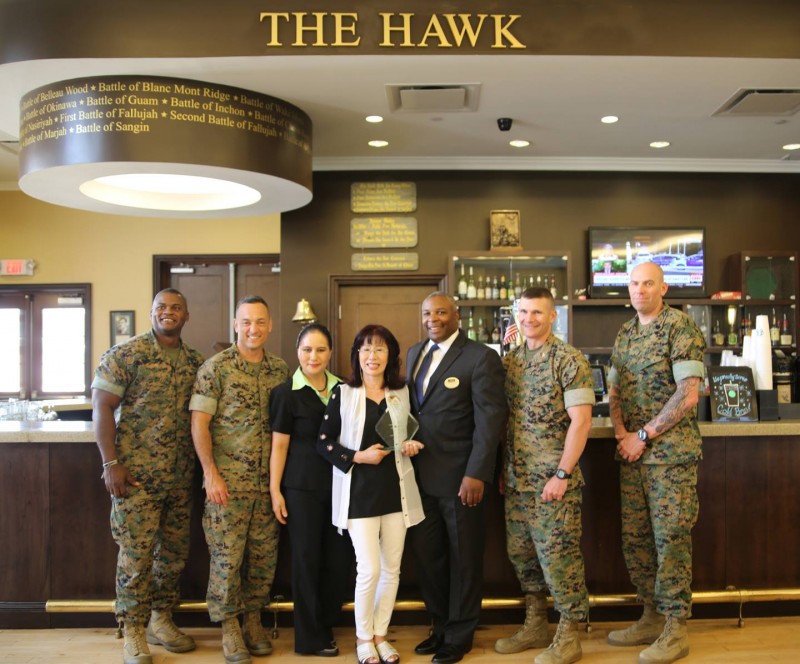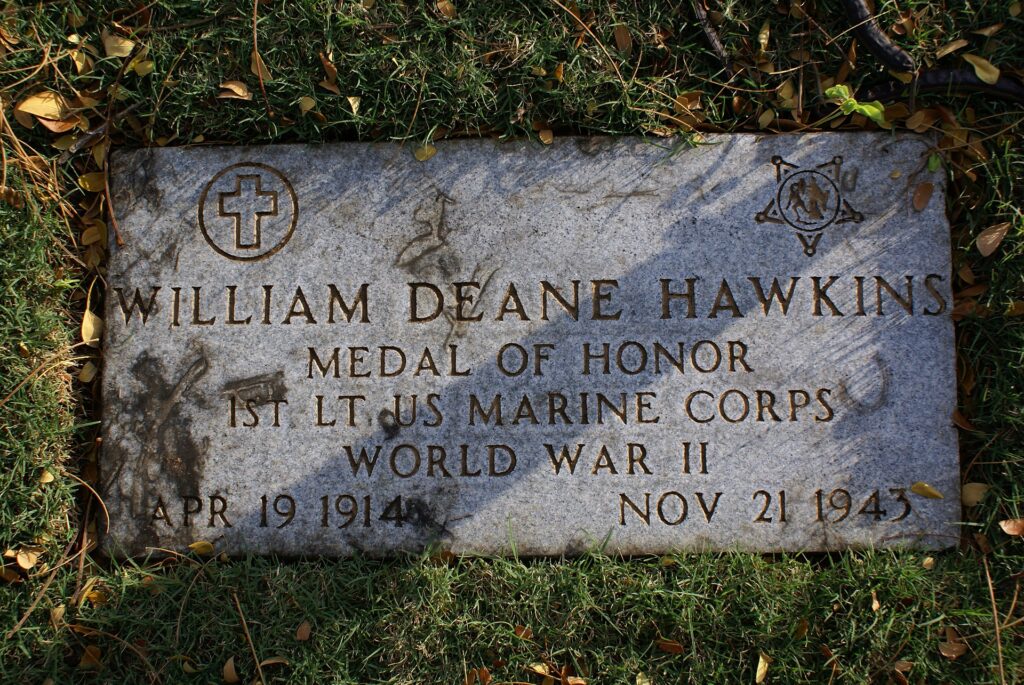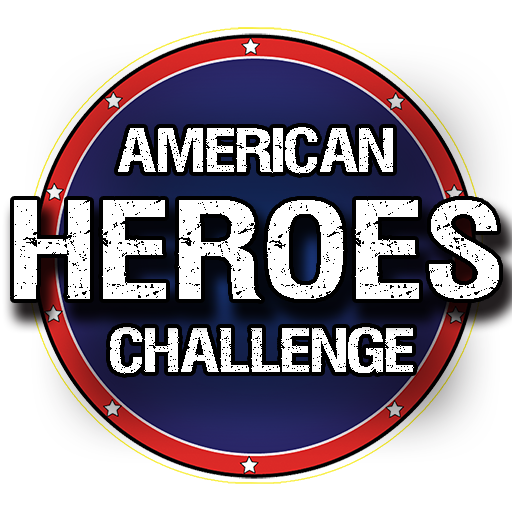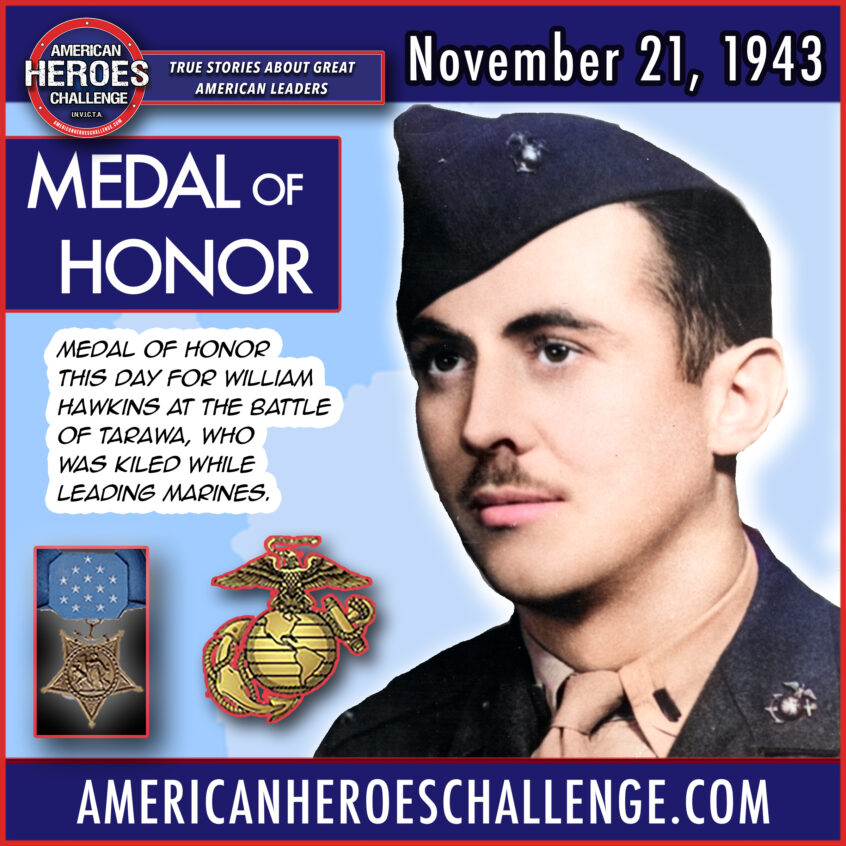I am thinking of William Hawkins today, who died leading Marines on Tarawa 80 years ago and who earned the Medal of Honor posthumously.
Hawkins was a Mustang – a Marine officer who previously served as an enlisted Marines. He joined the Marine Corps right after Pearl Harbor was attacked, he earned a battlefield promotion in Guadalcanal where he was serving as a Sergeant.

On Tarawa, Hawkins and his Marines had the mission of securing the pier jutting into the lagoon. The beach landing was a disaster, with Marines wading from 1000 meters out through machine gun fire.
Hawkins was slightly wounded by shrapnel, but he and his men quickly cleared the pier and then pressed inland. Hawkins personally cleared eight machine gun nests and pillboxes over throughout the day and into morning of November 21.
Hawkins was more seriously wounded a second time, but told his commanding officer, ““I’m not [leaving], sir. I came to kill Japs, not to go home.” He was killed not long after by indirect fire, as he was destroying his eight Japanese emplacement.
Born and raised in Texas, Hawkins had been seriously injured as a boy and underwent years of medical treatment to recover. Neither the Army nor Navy would accept him because of his scars. Before the War, he earned his degree at the Texas College of Mines and worked as an engineer.
The President of the United States takes pleasure in presenting the MEDAL OF HONOR posthumously to
FIRST LIEUTENANT WILLIAM D. HAWKINS
UNITED STATES MARINE CORPS RESERVE
for service as set forth in the following CITATION:
For valorous and gallant conduct above and beyond the call of duty as Commanding Officer of a Scout Sniper Platoon attached to the Second Marines, Second Marine Division, in action against Japanese-held Tarawa in the Gilbert Islands, November 20 and 21, 1943. The first to disembark from the jeep lighter, First lieutenant Hawkins unhesitatingly moved forward under heavy enemy fire at the end of the Betio pier, neutralizing emplacements in coverage of troops assaulting the main breach positions. Fearlessly leading his men on to join the forces fighting desperately to gain a beachhead, he repeatedly risked his life throughout the day and night to direct and lead attacks on pill boxes and installations with grenades and demolition. At dawn on the following day, First Lieutenant Hawkins returned to the dangerous mission of clearing the limited beachhead of Japanese resistance, personally initiating an assault on a hostile fortified by five enemy machine guns and, crawling forward in the face of withering fire, boldly fired point-blank into the loopholes and completed the destruction with grenades. Refusing to withdraw after being seriously wounded in the chest during this skirmish, First Lieutenant Hawkins steadfastly carried the fight to the enemy, destroying three more pill boxes before he was caught in a burst of Japanese shell fire and mortally wounded. His relentless fighting spirit in the face of formidable opposition and his exceptionally daring tactics were an inspiration to his comrades during the most crucial phase of the battle and reflect the highest credit upon the United States Naval Service. He gallantly gave his life for his country.
The bar at the Marine Corps’ Basic School in Quantico, which all new Marine officers attend to learn how to be an infantry officer, first, regardless of their military specialty, whether aviation or supply, is named for Hawkins and known affectionately as “The Hawk”.

Truly a remarkable man, a leader of Marines and a great American.


